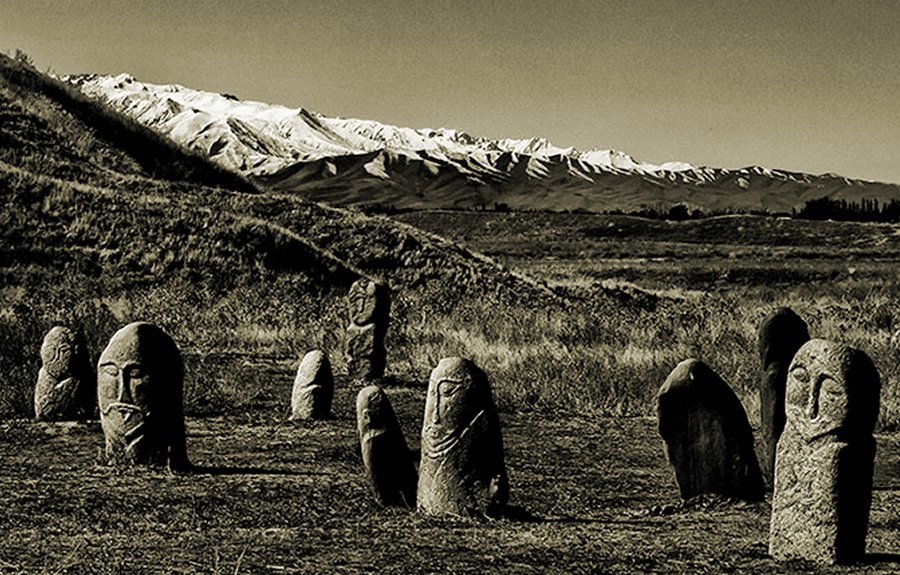AncientPages.com - The steppes of Kazakhstan, covering more than 804,500 square kilometers from the southern edge of the Ural Mountains to the northern shores of the Caspian and Aral Sea, are often related to age-old stone statues – ‘balbals’
These stone statues have many different names and the word “balbal” is often interpreted as a stone sculpture in the image of the figure of a human being.
There have been found many different "balbals" in the Kazakhstan steppe. They were carved out of granite or sandstone and they look as idols, milestones and road signs for travelers at the same time.
However, many scholars say “balbal” is the name of the “figures made of stone, arranged in the form of a fence on the east side, a true-vertically strengthened chain of pillars” as expressed by aresearcher and scholar Alkei Margulan in ‘Essays’, v. 14, Section 3, Almaty, 2003).
What is the true story behind the creation of these mysterious figures?
According to scientists, usually "balbal" was set up as a symbol of valor and long memory on the grave of outstanding human being. So these ancient monuments are monuments of the brave commander, wise ruler, someone very talented, respected by locals; simply a prominent figure who passed away.

Certain of the stone statues sit with crossed legs - “in the Kazakh style”, others stand, holding a ritual bowl with sacred water. And some sculptures are carved with the lace and swords on their belts, or with other weapons, or with braids or even earrings in their ears. Photo via rosemarysheel.com
The common feature of many of them is that they face East, because the ancient Turkic tribes and nations adhered to the Tengrian faith – veneration of the Immortal Blue Sky - in their belief and traditions. The setting up of the stone sculptures at the sacral complexes symbolizes that a well-known and important person of ancient society is buried there.
Certain of the stone statues sit with crossed legs - “in the Kazakh style”, others depict upright standing person, about meter or half-meter in height holding a ritual bowl with sacred water.
Some sculptures are carved with the lace and swords on their belts, or with other weapons, or with braids or even earrings in their ears. In general, these are the statues of military leaders - distinguished commanders or warriors. Among the statues of the subsequent period, along with male sculptures there are also monuments - female "balbals" put up in honor of women.
The stone balbals are widespread – they are found in a vast expanses stretching from the river Orhon in Mongolia to the shore of the Caspian Sea. Beyond the epoch of the Kypchaks the stone statues spread to the North Caucasus, Russia, Ukraine, and to the West as far as the Danube. In moving westwards and with the course of time, the shape of the sculptures changed.
The “balbals” are perfect artifacts for studying ancient times; unfortunately, the number of stone statues in the steppe is decreasing from year to year. Most of them have been stolen, pulled apart by unidentified individuals, broken or destroyed.
Alkei Margulan, who researched stone“balbals” of the Central Kazakhstan in the period between 1946- 1956, commented, “Most stone sculptures are being destroyed; and many sculptures are being dug out and taken away, or broken and left by passers-by”. (A.K. Margulan, Essays, volume 14, Section 3, Almaty, 2003).
Copyright © AncientPages.com All rights reserved. This material may not be published, broadcast, rewritten or redistributed in whole or part without the express written permission of AncientPages.com
source: Britannica






